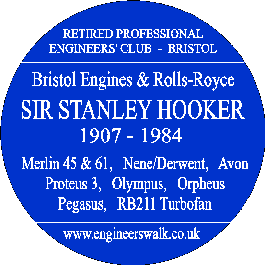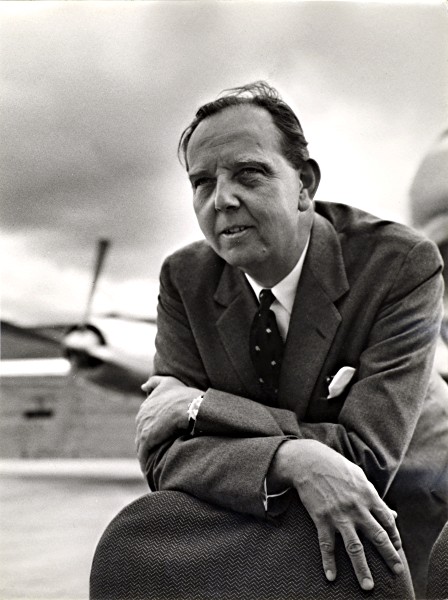 He gained another scholarship in 1929 to study aeronautics for three more years at Imperial College where he was greatly influenced by the work of Sir Geoffrey Taylor. Another scholarship and he went to Brasenose College Oxford in 1932. The National Physical Laboratory was investigating the 'bow wave' in front of an object travelling at the speed of sound and beyond. Hooker extended Taylor's equations for predicting the size of these shock waves that proved accurate up to Mach 1.8. He gained another scholarship in 1929 to study aeronautics for three more years at Imperial College where he was greatly influenced by the work of Sir Geoffrey Taylor. Another scholarship and he went to Brasenose College Oxford in 1932. The National Physical Laboratory was investigating the 'bow wave' in front of an object travelling at the speed of sound and beyond. Hooker extended Taylor's equations for predicting the size of these shock waves that proved accurate up to Mach 1.8.In 1935 with a D.Phil. from Oxford, Hooker started his first job at The Admiralty Laboratory near the National Physical Laboratory. For a while he was seconded to the Director of Ballistics at Woolwich Arsenal, working on barrages of cordite rockets. Then he was called to visit Derby for an interview with Ernest Hives the Works Manager at Rolls-Royce. Hooker recalls that Hives asked him 'What's a Karman Vortex Street?' The answer was probably incomprehensible to Hives who commented 'You're not much of an engineer are you?' Hooker used that as the title of his autobiography. For a while he was seconded to the Director of Ballistics at Woolwich Arsenal, working on barrages of cordite rockets. Then he was called to visit Derby for an interview with Ernest Hives the Works Manager at Rolls-Royce. Hooker recalls that Hives asked him 'What's a Karman Vortex Street?' The answer was probably incomprehensible to Hives who commented 'You're not much of an engineer are you?' Hooker used that as the title of his autobiography. Rolls-Royce for the First TimeAero engines suffer a fall in power as altitude increases due to lower atmospheric pressure. A supercharger that boosts the pressure of the air/fuel mix supplied to the engine can counteract this effect. A centrifugal supercharger comprises a centrifugal rotor, driven from the engine, that spins the input air outwards to increase its velocity, and a diffuser that converts this speed energy to increased air pressure.Rolls-Royce was already producing the famous Merlin, a 12 cylinder 'V' shaped engine (a configuration favoured by the company since Henry Royce's first Eagle aero engine) with a supercharger which was very good by contemporary standards. Hooker expanded the existing theory of centrifugal compression and calculated that the efficiency of the supercharger could be significantly improved. Ernest Hives liked the proposed alterations, put Hooker in charge of supercharger development and authorised production of an improved supercharger. The mark 45 version of the Merlin went into service in the Spitfire V just after the Battle of Britain (1940) allowing this plane to be flown at full power up to a greater height. The XX version of this engine was used in Hurricanes, Mosquitos, and Lancasters. The next step was the Merlin 61 with a two stage supercharger which boosted the power even more and increased the full power rated altitude to over 23,000 feet. To avoid unacceptably high inlet temperatures it was necessary to fit an intercooler between the supercharger and the engine. These engines powered the supreme fighters of World War II, the Spitfire IX that had a modified front end to accommodate the longer engine (1941) and, later, the American P-51 Mustang.  In May 1941 Frank Whittle's W.1 jet engine, which produced 800lbs of thrust, flew in the Gloster E.28/39 aircraft. The front end of a jet engine is a compressor, the difference from a supercharger being that it is driven by a turbine in the exhaust gases at the rear of the engine. Whittle's next engine, the W.2B, was built by the Rover Car Company at Barnoldswick. Hooker understood the importance of these events and Ernest Hives decided that they should acquire the jet engine project from Rover in exchange for Rolls' Meteor tank engine production. Hooker moved to Barnoldswick in January 1943 as Chief Engineer and assembled a design team. The Minister of Aircraft Production, Sir Stafford Cripps wrote, 'nothing, repeat nothing, is to stand in the way of the development of the jet engine'. The B23 version of the W2 engine, rated at 1600 lbs thrust was named Welland and powered the Meteor I jet fighter. With a modified compressor, straight through combustion chambers, and improved turbine capable of handling the increased gas flow, the engine gave 2000 lbs thrust and became the Derwent that powered later Meteors. In the meantime the Government had decided that the secrets of jet propulsion should be divulged to the USA. General Electric was chosen to develop their own version of the Whittle's engine. Hooker visited GE in 1943 and was astonished to find that they had already produced an engine with 4000 lbs thrust. On his return he set about a new design with 5000 lbs thrust. The diameter of the compressor was increased, a more efficient combustion chamber was designed and a cooling system for the turbine disc introduced. Whittle contributed a better compressor cowling and intake vanes. In just 5 months the team produced the most powerful aero engine in the world: the Nene. Unfortunately there were then no aircraft requiring this powerful engine, so Rolls-Royce produced a scaled down version named the Derwent V with a thrust of 3500 lbs. It was two of these engines in a Meteor that gained the world speed record at 606 mph in 1945. Eventually the US Navy became interested in the Nene and Pratt and Whitney were licensed to build them. Some Nenes were sold to Russia and without any license they were copied and produced in great numbers to power MiG fighters. Nenes were later built in France, China and other countries. Whittle had always known that axial compressors would be more efficient and that as they became better understood they would supersede centrifugal compressors. Axial compressors with a high compression ratio do not perform well at start up when the ratio is low and are subject to surges. These surges may stop the engine accelerating and even lead to failure of the blades. Work had started at Rolls-Royce on an axial jet design (AJ 65) in 1945 with a design compression ratio of 7:1. Mechanical and aerodynamic problems were revealed on the first test machine in 1946. Hooker had personal problems as well; he had been working hard for many years and his marriage had broken down. He was sent to Argentina for an extended period of recuperation and while there sold the Argentines a licence to build Derwents! Ernest Hives responded to the problems, and also recognised that jets were taking over from piston engines. He decided to absorb the Barnoldswick operation into the heart of Rolls-Royce in Derby, so depriving Hooker and his team of their independence. The close relationship between Hooker and Hives broke down and Hooker resigned from Rolls-Royce on his birthday in 1948. On the brighter side Hooker had met Kate Garth who was to become his second wife in a very happy marriage. (The AJ 65 had been rated at 6,500 lbs thrust in mid 1947 and it too had a bright future. Named Avon it powered the Canberra and Valiant bombers and the Comet and Caravelle airliners, its final version for the Mach 2 Lightning interceptor developing 17,110 lbs thrust with reheat). The Bristol YearsBristol Aeroplane Company like Rolls-Royce had a long and proud tradition of building piston aero engines. Unfortunately their brilliant Chief Engineer (Engine Division) Roy Fedden was not equipped or minded to design jet engines and had departed. The company was committed to providing a turboprop engine for two giant airliners the Bristol Brabazon and the Saunders-Roe Princess. Neither the Proteus 1 nor the Proteus 2 was up to the job. The company was now years behind Rolls-Royce, but they did have a promising design for a pure jet engine called Olympus. They had also been required by the Ministry of Supply to produce Rolls-Royce Avons to boost the supply to the RAF!Reginald Verdon Smith, an old friend at Oxford, was now a Director of the Bristol Aeroplane Company. Smith took Hooker on and by the middle of 1950 he had been appointed Chief Engineer (Engine Division). Hooker delegated responsibility for the large piston engine programmes to existing staff and assembled a new design team to start on another redesign, the Proteus 3. He was very relieved when the Brabazon and Princess programmes were abandoned, thereby consigning the Proteus 1 and 2 engines to history. The Proteus 3 was then destined to power the much more promising Britannia airliner. The Proteus 3 had a hybrid centrifugal/axial compressor, a high-pressure turbine to drive the compressor and a low-pressure turbine to drive the propellers. The machine tested very well, and flew in the Britannia in 1953, but unfortunately the design had inherited one flaw from the earlier designs. The air intake was near the back of the engine and air flowed forwards through the compressor. It was then reversed again to flow through the combustion chambers. This produced a short but rather fat engine enabling multiple engines to be fitted in the Brabazon and Princess. When flying in the tropics ice formed in the air intake casings and solving the problem delayed the Britannia entering service by 2 years. This fine aircraft missed its market that was soon taken by the first American pure jet airliners. Hooker had been impressed with the design of the Olympus when he first saw it in 1949. The engine had two axial compressors each of modest compression ratio to avoid the surge problems that plagued other axial designs (3:1 for the low pressure and 4:1 for the high pressure). Both were lower ratio than the Rolls-Royce Avon compressor, but the combined ratio was considerably higher at 12:1. Separate turbines drove the two independent compressors by separate shafts, one inside the other. This was the first such two-shaft or 'two spool' design in the world.  The initial tests of a new engine are usually quite tentative and the Bristol testers had never tested a pure jet engine before. The first test of the Olympus was to be witnessed by a visiting American that wished to become a licensee to build the engine. Hooker boldly took over from the testers and within seconds fully opened the throttle. The engine performed magnificently showing no aerodynamic or mechanical flaws and delivering its design thrust of 10,000lbs. The American bought a license for his Curtiss-Wright Corporation but this large supplier of piston engines failed to capitalise on jet engines and faded away. The initial tests of a new engine are usually quite tentative and the Bristol testers had never tested a pure jet engine before. The first test of the Olympus was to be witnessed by a visiting American that wished to become a licensee to build the engine. Hooker boldly took over from the testers and within seconds fully opened the throttle. The engine performed magnificently showing no aerodynamic or mechanical flaws and delivering its design thrust of 10,000lbs. The American bought a license for his Curtiss-Wright Corporation but this large supplier of piston engines failed to capitalise on jet engines and faded away.The Mark 101 production engines delivered for Vulcan bombers produced 11,000 lbs thrust. The Mark 104 produced 13,500 lbs thrust and two of these engines in Bristol's Canberra bomber testbed allowed Walter Gibb to raise the world altitude record to almost 66,000 feet in 1955. There was competition between the Olympus and the Rolls-Royce Conway engine for use in the later Vulcans. Verdon Smith boldly proceeded with the 200 series (17,500 lbs. thrust) and 300 series Olympus (20,000 lbs thrust) without Government finance and won the day. Like the Proteus, the Olympus found a multiplicity of uses, in Royal Navy warships and electricity generating stations throughout the world. A supersonic version of the engine, the Olympus 320, was developed for the ill-fated TSR.2. In 1962 this was the baseline engine used for supersonic airliner studies on both sides of the Channel. The initial design for the supersonic airliner was by the Bristol team of Archibald Russell and showed six engines. A consortium of British and French companies eventually built it: the Concorde. The Bristol Siddeley team under Hooker redesigned the Olympus again, producing the larger Mark 593B with French partners SNECMA responsible for the reheat, variable rear nozzles and thrust reversers. The Olympus 593B could deliver 38,000 lbs thrust so Concorde required only four engines. The first flight was in 1969. Once again a superb aeroplane with excellent engines was not a commercial success due to environmental concerns, political interference but mostly the unprecedented rise in the price of fuel. Hooker had spent his life picking up the designs of others and developing them, generally beyond the dreams of their original designers. The opportunity to design an engine from scratch arose in 1952 when Edward Petter, the Managing Director of Folland Aircraft, wanted a lightweight engine for a cheap lightweight fighter he was designing called the Gnat. (Incidentally Folland was owned at the time by Charles Hill a famous Bristol shipping company). At the same time NATO were promoting a lightweight fighter. There was financial assistance available from the USA through NATO and Hooker designed the Orpheus, a simple axial engine. He used a large diameter but thin walled tube for the main drive shaft. The shaft was rigid enough for the central bearing, which would normally be placed between the turbine and the compressor, to be omitted. New methods of mounting the turbine and the compressor blades on the shaft were employed. The result was an engine producing 5000 lbs thrust but weighing only 800 lbs. (This was the same thrust but half the weight of the Nene engine). Orpheus engines were built in Italy and Germany for the NATO fighter the Fiat G91. The Folland Gnat was adopted by the RAF as a trainer and used by the Red Arrows display team. Many more Gnats and their Orpheus engines were manufactured under license in India by Hindustan Aircraft Ltd.  In 1957 Col. John Driscoll, the American who had administered the finance for the Orpheus, turned his attention to the possibilities of vertical take off. There had been various attempts at VTO machines with multiple engines. A Frenchman, Michel Wibault, had designed a machine with just one engine but four ducts to direct compressed air downwards. The ducts would be rotated to give forward thrust, an idea that was named 'vectored thrust'. The compressors were to be driven by a Bristol Orion engine. Hooker and his young colleague Gordon Lewis took Wibault's swivelling nozzles but designed a new two-spool turbofan engine (reviving an old Bristol name - Pegasus) to provide the jets. With more financial assistance from the USA, Hooker and Lewis based the core of the Pegasus engine on the Orpheus. A large compressor fan (originally adapted from the Olympus) was added in front of the front bearing. This is common practice in turbofan engines. Part of the compressed air from the fan exits through the front pair of vectoring nozzles which are known as the cold jets. The rest of the air is directed through the modified engine and is directed through the rear pair of vectoring nozzles, known as the hot jets. Sidney Camm at Hawker Aircraft designed the P 1127 aircraft around the engine. The first flight was in 1960 with the Pegasus developing about 10,000 lbs of thrust. By 1969 the Pegasus 11 was rated at 21,500 lbs thrust for production Harriers. Rolls-Royce for the Second TimeThe Government had inspired many mergers in the UK aircraft industry and Bristol (Engines Division) had become Bristol Siddeley Engines. In 1966 the company was taken over and Hooker found himself working for Rolls-Royce again. He was not invited to join the Board of the Company and with the Concorde and Harrier programmes reaching fruition, he decided to retire on his 60th. birthday in 1967, although he acted as a consultant for another 3 years.Rolls-Royce for the Third Time.In the mid-1960s 'high bypass' turbofan engines were being developed in the USA. Like the Pegasus a large fan is added in front of the main compressor and is driven by its own turbines. Part of the output from this fan bypasses the 'core' of the engine and is directed straight to the jet pipe providing additional thrust. These engines provided greater thrust with reduced fuel consumption hence longer range, and reduced noise.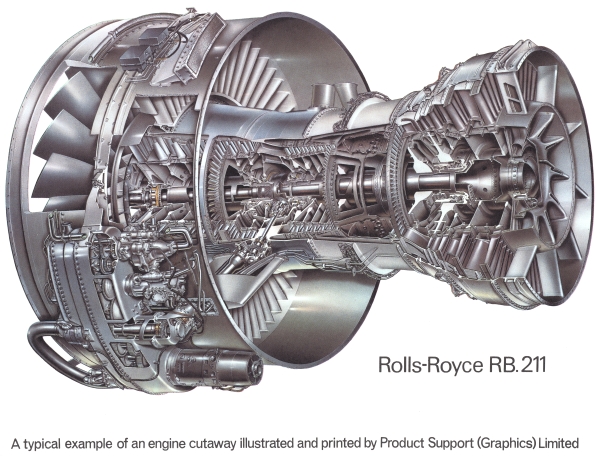 GE was developing powerful engines of this type for military transports and Pratt and Whitney its similar JT-9 for Boeing's jumbo jet. Rolls-Royce had won the contract to build a slightly less powerful turbofan, the RB.211, for the Lockheed Tristar. The engine was a very ambitious design with three shafts and carbon fibre blades in the fan. Carbon fibre is immensely strong but proved to be unable to withstand the impact of birdstrikes. The replacement titanium blades added a lot of weight to the engine. In the turbines Rolls-Royce were still using forged nickel alloy blades but these were failing at the higher temperatures now required.
GE was developing powerful engines of this type for military transports and Pratt and Whitney its similar JT-9 for Boeing's jumbo jet. Rolls-Royce had won the contract to build a slightly less powerful turbofan, the RB.211, for the Lockheed Tristar. The engine was a very ambitious design with three shafts and carbon fibre blades in the fan. Carbon fibre is immensely strong but proved to be unable to withstand the impact of birdstrikes. The replacement titanium blades added a lot of weight to the engine. In the turbines Rolls-Royce were still using forged nickel alloy blades but these were failing at the higher temperatures now required.By 1970 the company was in financial difficulty. Hooker was called out of retirement to become Technical Director. In February 1971 the company was declared insolvent, and was taken over with remarkable speed by the Government. In the same month Hooker produced a report convincing the new management that the RB.211 engine could be rapidly and successfully developed to meet its designed performance. Within 15 months the engine was in service and it was developed by Rolls-Royce to more than match its American competitors. Today the Rolls-Royce Trent, a 3-shaft engine family developed from the RB.211, is the keystone of the company's worldwide success, something that might never have been achieved without Hooker's determination in the dark days of 1971. 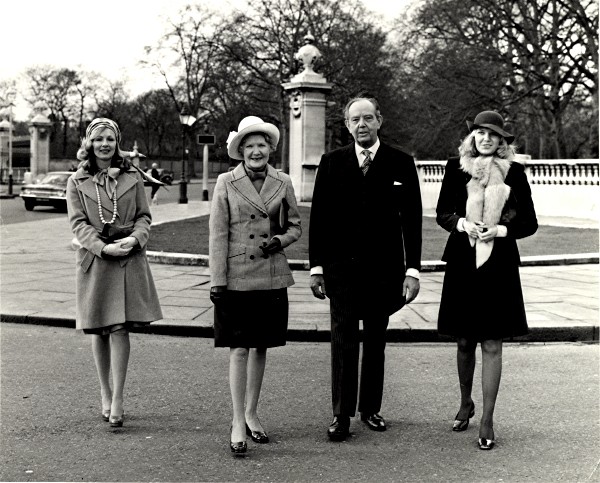 Sir Stanley Hooker was knighted in 1974 and finally retired in 1979. He died in 1984. John Coneybeare December 2006 Bibliography Not much of an Engineer by Sir Stanley Hooker (Airlife) Photos are available from http://www.transportarchive.org.uk (use "Hooker" as the keyword). 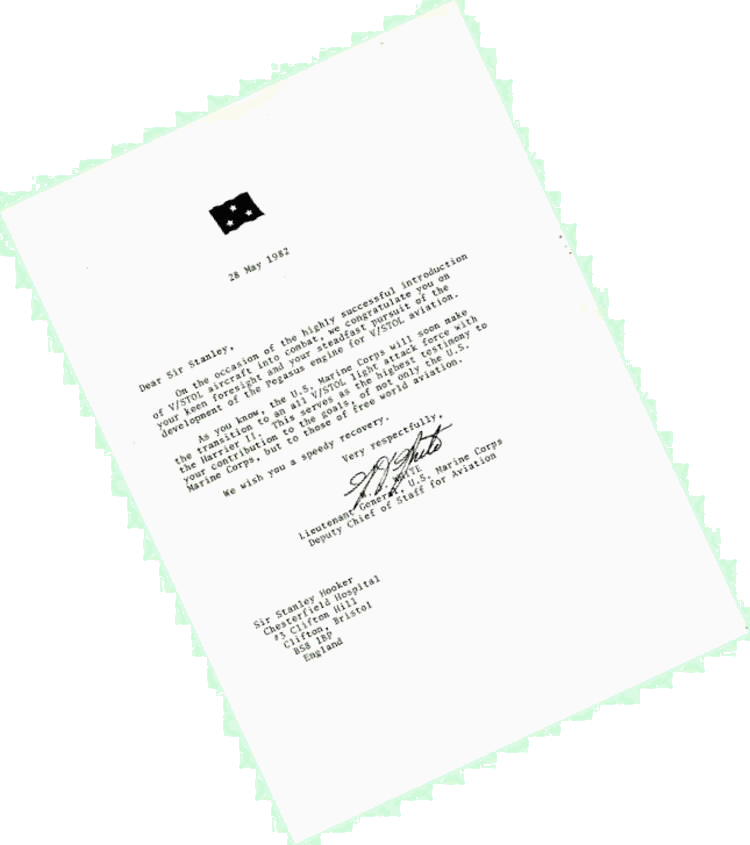
|
